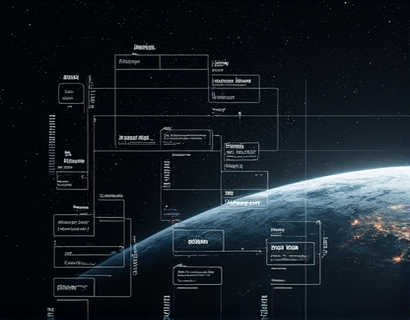Maximizing Leadership Impact: Advanced Dashboard for Efficient Team Management and Enhanced Productivity Across Industries
In today's fast-paced business environment, effective leadership is crucial for driving success and maintaining a competitive edge. Leaders across various industries face the challenge of managing large, diverse teams while ensuring seamless communication, informed decision-making, and optimal productivity. An advanced dashboard designed specifically for leadership can significantly streamline these processes, offering a comprehensive solution to manage teams efficiently and enhance overall performance. This article delves into the benefits and functionalities of such a dashboard, highlighting how it can transform leadership effectiveness and drive productivity across different sectors.
Understanding the Need for Advanced Leadership Dashboards
Leadership dashboards are powerful tools that provide leaders with real-time insights and actionable data to make informed decisions. These dashboards integrate various data sources, including project management tools, communication platforms, and performance metrics, into a single, user-friendly interface. By centralizing this information, leaders can monitor team activities, track progress, and identify areas for improvement without the need to switch between multiple applications.
The complexity of managing large teams is amplified by the diversity of roles, departments, and workflows involved. Traditional management methods often fall short in providing the necessary visibility and control, leading to communication gaps, delayed decision-making, and reduced productivity. An advanced dashboard addresses these challenges by offering a unified view of the team's performance, enabling leaders to respond promptly to emerging issues and capitalize on opportunities.
Key Features of an Advanced Leadership Dashboard
An effective leadership dashboard encompasses a range of features designed to enhance team management and boost productivity. Some of the key functionalities include:
- Real-time Monitoring: Leaders can track the status of projects, tasks, and team members in real-time, ensuring they are always up-to-date with the latest developments.
- Customizable Dashboards: The ability to tailor the dashboard to specific needs and preferences, allowing leaders to focus on the most relevant metrics and KPIs.
- Collaboration Tools: Integrated communication features such as chat, file sharing, and task assignment facilitate seamless collaboration among team members.
- Performance Analytics: Detailed reports and analytics provide insights into team performance, helping leaders identify trends, bottlenecks, and areas for improvement.
- Alerts and Notifications: Automated alerts for critical events or milestones ensure that leaders are promptly informed of important updates.
- Integration Capabilities: Seamless integration with existing tools and platforms, reducing the need for manual data entry and ensuring data consistency.
These features collectively empower leaders to manage their teams more effectively, fostering a productive and cohesive work environment.
Enhancing Communication and Collaboration
Effective communication is the cornerstone of successful team management. An advanced dashboard enhances communication by providing a centralized platform where team members can interact, share information, and collaborate on tasks. Key benefits include:
- Improved Clarity: With all communication and project details in one place, team members have a clear understanding of their responsibilities and deadlines.
- Increased Transparency: Real-time updates and visibility into ongoing projects promote transparency, reducing misunderstandings and building trust among team members.
- Streamlined Workflows: Integrated task management and workflow tools enable smooth handoffs and efficient progress tracking, minimizing delays and maximizing productivity.
By fostering a culture of open communication and collaboration, leaders can harness the full potential of their teams, leading to higher job satisfaction and better outcomes.
Driving Decision-Making with Data-Driven Insights
Data is the backbone of informed decision-making. An advanced leadership dashboard provides leaders with actionable insights derived from comprehensive data analytics. Key advantages include:
- Informed Strategies: Access to real-time data and historical trends enables leaders to make strategic decisions based on factual evidence rather than assumptions.
- Performance Optimization: Detailed performance metrics help identify strengths and weaknesses, allowing leaders to allocate resources more effectively and address areas needing improvement.
- Risk Management: Early detection of potential issues through analytics allows leaders to take proactive measures, mitigating risks and ensuring smooth operations.
By leveraging data-driven insights, leaders can drive more effective decision-making, leading to enhanced productivity and sustained growth.
Cross-Industry Applications of Advanced Leadership Dashboards
The versatility of advanced leadership dashboards makes them applicable across a wide range of industries, including but not limited to:
- Technology and Software Development:
- Healthcare:
- Manufacturing and Logistics:
- Retail and E-commerce:
- Finance and Banking:
In the fast-paced tech industry, dashboards help project managers oversee multiple development projects, track bug fixes, and monitor team productivity to meet tight deadlines.
Healthcare leaders can use dashboards to manage patient care workflows, monitor staff schedules, and ensure compliance with regulatory standards, ultimately improving patient outcomes.
Manufacturing and logistics leaders benefit from dashboards that track production lines, manage supply chains, and optimize resource allocation, leading to increased efficiency and reduced costs.
Retail and e-commerce leaders can leverage dashboards to monitor inventory levels, track sales performance, and manage customer service operations, enhancing the overall customer experience.
Financial institutions use dashboards to oversee transactions, manage risk, and ensure regulatory compliance, maintaining the integrity and security of their operations.
Regardless of the industry, the core benefits of an advanced leadership dashboard remain consistent: improved communication, enhanced decision-making, and increased productivity.
Implementing an Advanced Leadership Dashboard
Implementing an advanced leadership dashboard involves several steps to ensure a smooth transition and maximum impact:
1. Assessment: Evaluate the current management processes and identify specific needs and pain points.
2. Selection: Choose a dashboard solution that aligns with the organization's goals and integrates seamlessly with existing tools.
3. Customization: Tailor the dashboard to meet the unique requirements of the organization, focusing on key metrics and workflows.
4. Training: Provide comprehensive training for leaders and team members to ensure they can effectively use the dashboard.
5. Monitoring and Adjustment: Continuously monitor the dashboard's impact and make adjustments as needed to optimize performance.
By following these steps, organizations can successfully implement an advanced leadership dashboard, reaping the benefits of enhanced team management and productivity.
Conclusion
In conclusion, an advanced leadership dashboard is an invaluable tool for modern leaders seeking to maximize their impact. By streamlining team management, enhancing communication, and driving data-driven decision-making, these dashboards help organizations across various industries achieve higher levels of productivity and success. Embracing this technology is not just about keeping up with the times; it's about leading the way in an increasingly competitive business landscape.










































